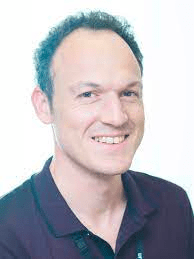The government faces an uphill battle to establish the workforce it will need for its nuclear powered submarines program, a senior academic says.

Dr Edward Obbard heads nuclear engineering at UNSW, one of the Australian research institutions earmarked by the federal government to turn out the top level experts and nuclear-capable engineers required to support a sovereign program.
He says the government will face major challenges to meet the schedules announced last month.
“It’s only four years until 2027 and that is when the first nuclear-powered submarines will be coming to Australia, and we will have to have people trained up to work on them and help maintain them, while also getting experience of the nuclear systems involved,” Dr Obbard says.
“It does not sound very far away to me and right now there are insufficient numbers of trained experts to support a sovereign nuclear propulsion program.”
Nuclear fleet
The government has unveiled plans to build a fleet of SSN-AUKUS nuclear powered submarines over the next 30 years, with US and UK nuclear powered submarines to be stationed in WA while the new vessels are being built.
The government has acknowledged the program will need a large workforce. It says it is developing a workforce and industry strategy to create around 20,000 jobs over the next 30 years across industry, the ADF and the APS, including trades workers, operators, technicians, engineers, scientists, submariners and project managers.
It estimates that at its peak, building and sustaining nuclear-powered submarines in Australia will require 8,500 direct industrial jobs.
That includes an estimated 4,000 workers to design and build the infrastructure for the new submarine construction yard in South Australia, and a further 4,000 to 5,500 to build the submarines within the next 20 to 30 years – almost double the workforce forecast for the dumped Attack class program.
Three-tier workforce
Dr Obbard’s modelling suggests it will take three tiers of workers and a workforce of at least 8,000 to build and maintain the submarines, and around 1,500 more to operate them.
The top tier alone will need about 200 highly trained and experienced experts responsible for top-level decisions. This cohort will require high levels of education and about 20 years experience working on real nuclear systems, he says.
“To produce this community of top tier subject matter experts I think that you’d have to produce about 100 PhDs a year in some kind of nuclear relevant discipline,” he told Government News.
To produce this community of top tier subject matter experts I think that you’d have to produce about 100 PhDs a year in some kind of nuclear relevant discipline. At the moment we’re turning out single digits.
Dr Ed Obbard
“At the moment we’re turning out single digits.”
The second level will be scientists, electrical and mechanical engineers, technical managers, reactor operators and even health physicists, with seven to ten year experience, also in working nuclear scenarios.
“With 13 possible boats, around 4300 people with the necessary skills and training will be required at this level to support the AUKUS program,” he says.
“I think Australia will need to send a significant amount of those middle tier experts overseas because we have so few nuclear facilities here for them to get the training they need on the relevant systems.”
The easiest group to produce will be the 4000 to 5000 workers with nuclear awareness level training, mainly tradespeople and skilled professionals, such as fitters, machinists, and welders.
“The bulk of the workforce in a shipyard would likely be at this ‘nuclear-aware’ level, and the training might only take a couple of months,” Dr Obbard says.
Dealing with the waste
Those figures don’t take into account the workers who’ll be needed to build, operate and manage the nuclear waste dump, which the government revealed last month will be located in Australia.
“Meeting all of those principles requires a significant workforce, Dr Obbard says.
“It’s not just about engineers and mechanics, there is also a vast amount of regulatory and government systems required.”
It’s not just about engineers and mechanics, there is also a vast amount of regulatory and government systems required.
Dr Ed Obbard
He says Finland’s experience in building the world’s first deep geologic repository for spent nuclear fuel gives an indication of the task ahead.
Finnish waste management company Posivo has started building the facility near the Olkiluoto Nuclear Power Plant on the west coast of Finland.
The cost is estimated at 3.5 billion euros, or $AU5.7 billion, with Posivo’s application for the operating licence taking more than 40 years of research.
Sovereignty at stake
Dr Obbard says whether or not Australia can produce the workforce required has important implications for the program’s sovereignty.
The government says Australians have already started training and working on nuclear-powered submarines and in UK and US facilities.
But Dr Obbard says unless Australia can produce the top experts, critical decisions will potentially end up being made by its AUKUS partners.
“Sovereignty relies on us having the workforce and skills to make these key decisions, such as when it’s safe to extend the life of a nuclear reactor,” he says.
“Probably Australian engineers and scientists should be making that decision. It would be good if we could make that decision without having to rely on someone else to tell us that’s safe.”
Have you taken the Government News Survey?





Leave a Reply